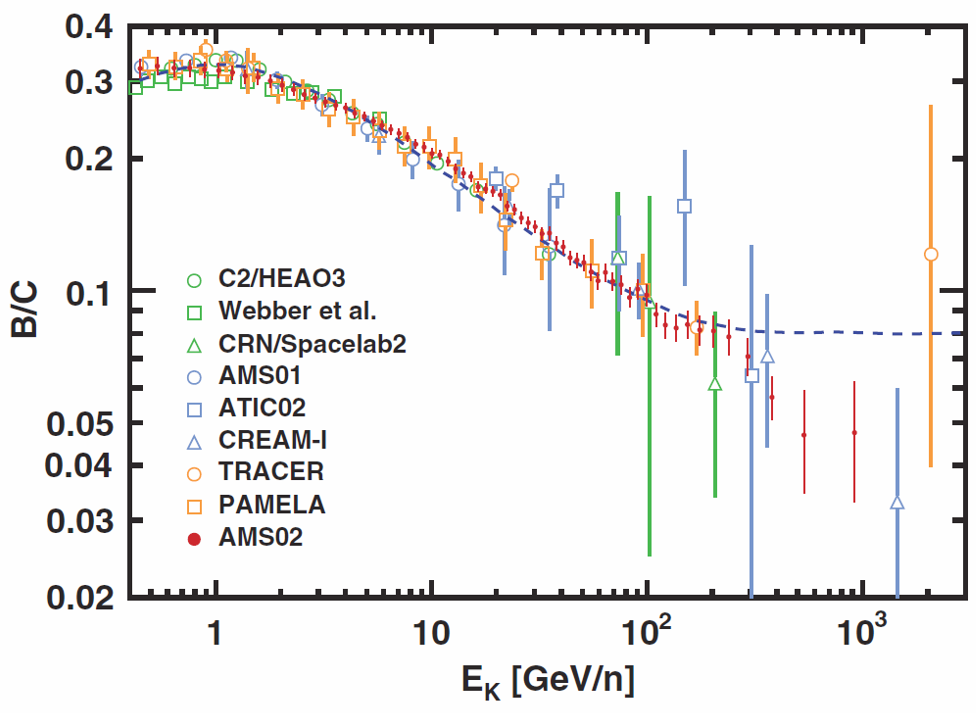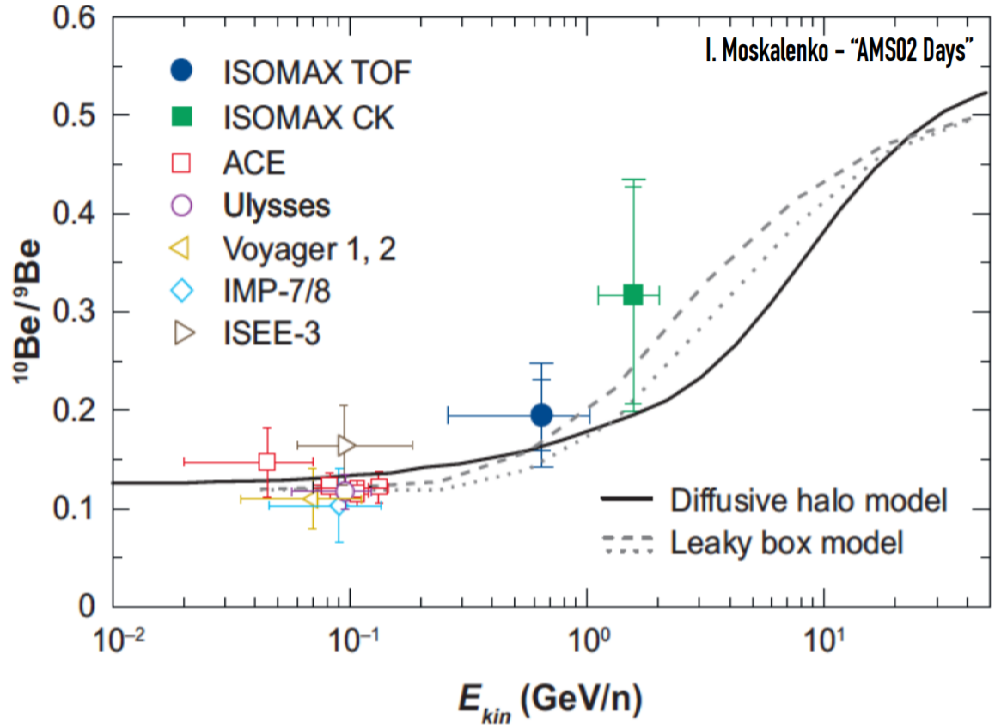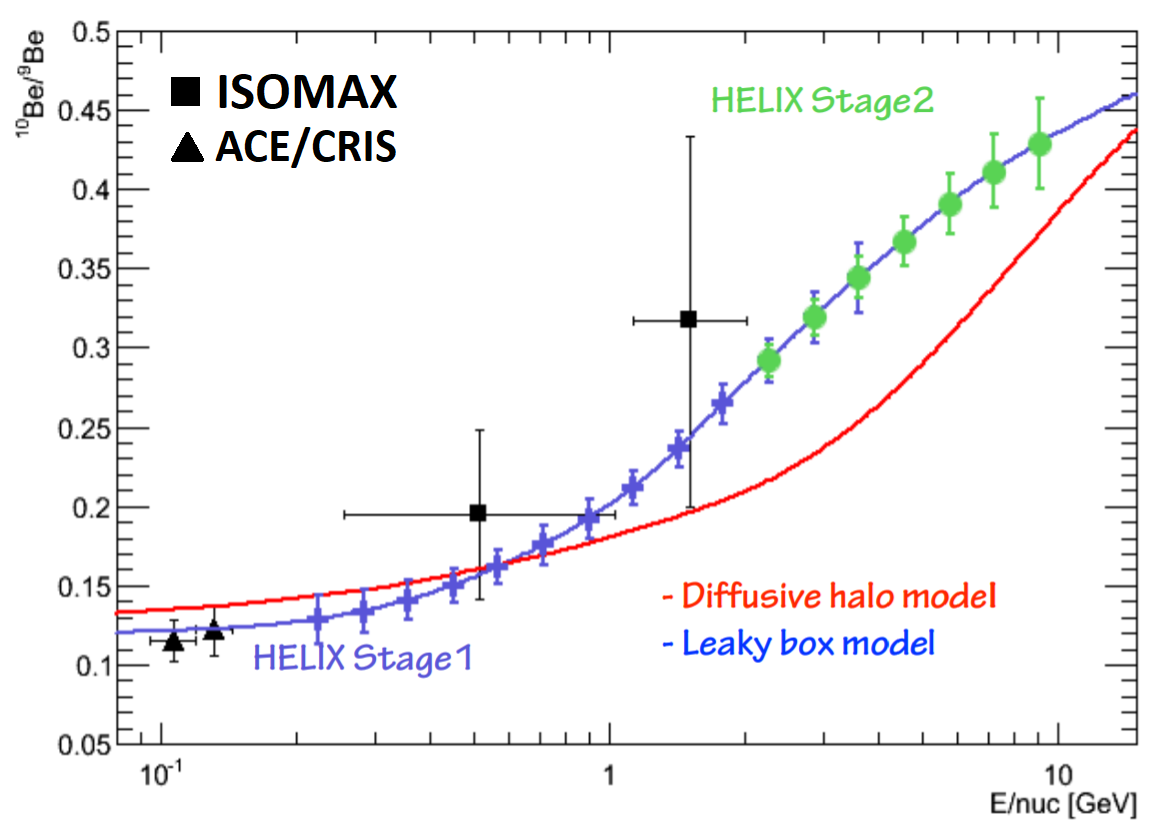Recent Updates from Direct Measurements
A new era of precision space-based measurements has brought some real surprises
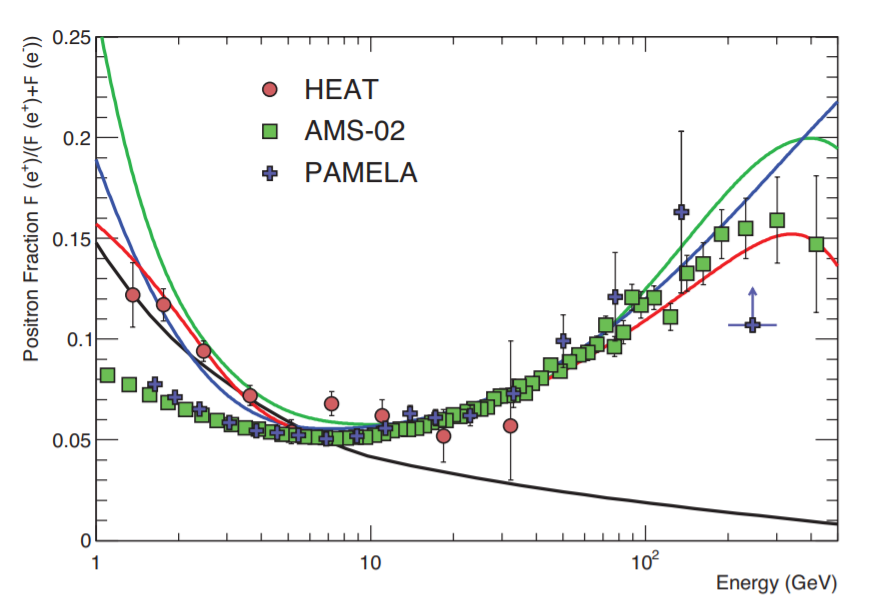
Rising positron fraction
The most highly publicized recent result has been the remarkable increase observed in the positron fraction reported by the PAMELA and AMS-02 collaborations. Early hints of this increase were previously reported by the HEAT collaboration. This behavior is in conflict with traditional models of cosmic-ray physics (black) and has been attributed to a wide variety of phenomena, including particle production in nearby astrophysical objects such as pulsars (red), to propagation physics, or to more exotic sources, including the annihilation or decay of dark matter particles (green and blue). Figure taken from the Particle Data Group.
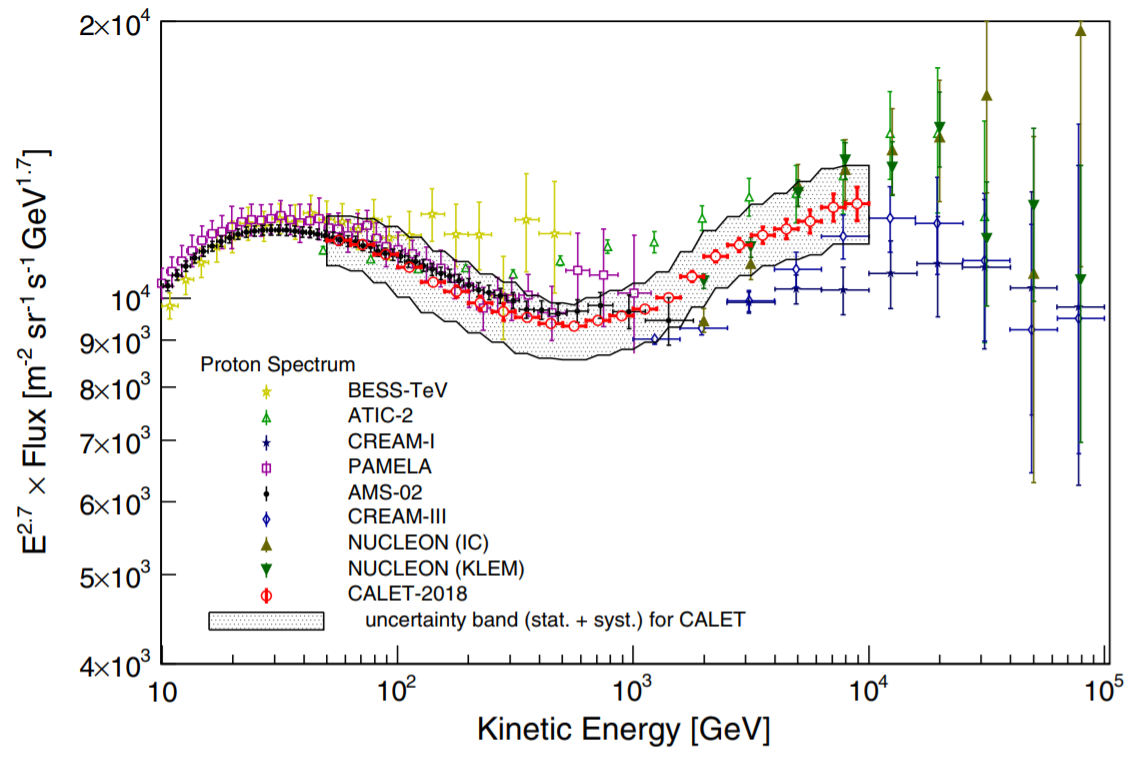
Element spectral hardening
New measurements of the proton and helium spectra by AMS-02 and CALET deviate from an expected single power-law distribution at a rigidity of around 300 GV, with the spectral indices becoming harder for higher energies. This spectral hardening has been observed for the fluxes of other elements up to oxygen as well. This hardening cannot be explained by traditional models; complementary measurements are necessary for better understanding. Figure taken from O. Adriani et al, PRL 2019
It is critical to understand cosmic ray propagation to interpret these results. With HELIX we aim to measure the isotopic abundance ratios as they provide key information necessary for discriminating between leading propagation models.
